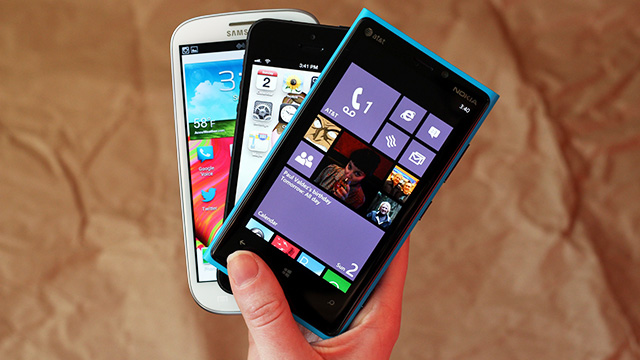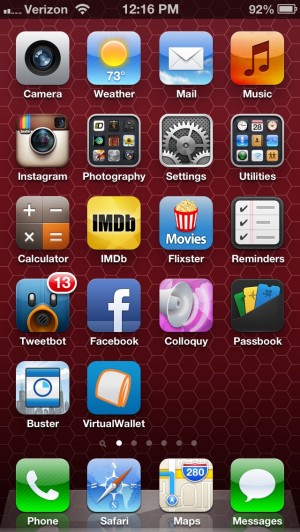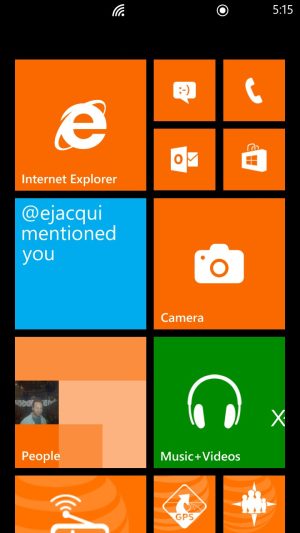
The last six months or so has seen a veritable storm of high-end smartphones. While you can generally count on new hardware being released year-round, this holiday season is particularly busy. Between the iPhone 5, iOS 6, the Nexus 4, Android 4.2, and Windows Phone 8, things have changed quite a bit since the summer.
Even more exciting, the smartphone wars aren't just a two-horse race anymore. Apple and Samsung continue to be the giants in the field, but we're seeing attractive handsets from a newly competitive LG, a Google that seems more eager than ever to show its Android partners how it's done, an HTC that's eager to thin out its product portfolio and reverse its ill fortunes, and a Nokia that really wants its bet on Windows Phone to pay off.
We know all this new hardware and software can be hard to keep straight. To that end, we'll be taking some time over the next few weeks to go in-depth on the state of the smartphone: we'll be examining not just the available hardware and software, but also which hardware and software will work best for particular uses. More than ever, smartphones are powerful devices that can handle an increasingly large amount of the work formerly unique to full-fledged computers. But just like the PC market, the hardware and software you buy is going to depend on what kind of things you need to use it for.
For the purposes of this overview, we're going to be focusing on current, high-end iOS, Android, and Windows Phone 8 handsets. These aren't the only players in the field, but they're certainly the most consequential: smaller platforms like Tizen, Open WebOS, and Firefox OS are either still in development or not widely available commercially. As for BlackBerry, RIM seems to be all but begging users, developers, and the press alike to wait for BlackBerry 10 to come out before writing it off... so that's what we'll do. Expect more coverage of RIM's latest as its projected March 2013 launch date approaches, but BlackBerry won't factor into today's discussion.
To kick off this series, we'll examine each platform's major strengths and weaknesses, then dive into specific phones and use cases.
The Platforms
iOS

However you feel about Apple, iOS and the iPhone redefined the smartphone market when they were released in 2007. Five major OS updates later it's still a solid platform; Apple has added its own unique features (iCloud, Siri, Passbook, and others) to keep the iPhone fresh, while borrowing the best features from other platforms (the Notification Center, in particular) to keep it competitive. In iOS, Apple focuses on creating a smooth and responsive experience above all—the screen usually reacts instantly to touch, and even in cases where applications don't launch instantly, Apple makes good use of animations and transitions throughout the system to let users know that their input has been recognized.
The biggest draw of Apple's smartphone platform continues to be its vibrant third-party application library. There are problems, both real and imagined, with Apple's opaque application approval process and the limitations imposed by its sandboxing model. But the breadth, depth, and general level of polish among the applications available trumps both Android and Windows Phone.
This is because, generally speaking, the iOS platform is pretty developer-friendly: compared to Android there are just a few different devices and screen sizes that must be tested against. iOS users tend to both download more apps and to pay more for those apps as well. There may be restrictions on what developers can do, but if you're looking to earn a return on your investment, Apple's platform is the one to beat in the mobile space.
Gaming, in particular, is one of Apple's strengths. The development environment attracts not just big mobile game publishers like Rovio or Halfbrick, but also droves of independent developers who put out small-but-memorable titles like Tiny Wings and 10000000. Apple's products tend to have more powerful graphics processors than most competing phones as well.
The other benefit to buying into the iOS platform is the hardware's relative longevity. iPhones tend to receive regular software updates (and their accompanying new features, security patches, and stability enhancements) for years after their release, regardless of which carrier you prefer. The most recent version of iOS runs on four generations of iPhone, reaching all the way back to 2009's iPhone 3GS. Not all phones support all of the operating system's features, but the general feature set, look and feel, and (more importantly for developers) list of supported APIs is consistent across all of the phones.
All of that said, the platform's biggest weakness (at least for some users) is its inflexibility. Apple controls every aspect of the user experience, meaning that if you don't like its app launcher, keyboard, or default Web browser and e-mail programs, you can't do much to change them. (Alternative programs for many tasks do exist, but Apple's restrictions prevent them from becoming fully integrated into the operating system.) iOS's home screen is also the least flexible of our chosen mobile platforms. You can only arrange app icons and folders into a grid on the home screen, but these icons are static images that can't provide information dynamically. Yes, each icon can display a number to alert you of items that need your attention, but what this number means can vary widely from app to app. Application widgets can't be placed on the home screen, and third-party developers can't produce widgets for the Notification Center either. Simply put, iOS is the way it is. That won't be a problem for many users, but it can feel unnecessarily restrictive to others.
Android

iOS' greatest weakness is in many ways Android's greatest strength: the platform is almost infinitely flexible. Google provides an increasingly polished, cohesive base operating system. On top of it, handset makers, carriers, the open source community, and even end users can build basically anything they want. Don't like Android's icons? Change them. Don't like how the keyboard works? Replace it. Don't like the layout or operating of the default home screen? Install a new one. Many alternatives exist in the Google Play store, which places relatively few restrictions on the kind of apps developers can and can't offer.
This lack of restrictions also allows applications to work together more freely, as they can on a more full-fledged computer. Android's Intents system allows an application to tell the operating system what it can do—open a link, upload a file, send a Tweet, and so on. Any application that needs to perform one of those activities can then choose among different applications and services on the phone. A link in an e-mail can be opened in either Firefox or Chrome by default, for example, where in iOS only Safari can open links by default.
The home screen itself is also pretty flexible. Like iOS, you'll mostly be using static icons to launch applications, but Android also allows the use of widgets to view small amounts of information without having to jump all the way into an app. If you just want a birds-eye view of your calendar or inbox, or if you'd like quick access to settings like screen brightness and whether Bluetooth is enabled, widgets will let you do all of that more quickly and more flexibly than in iOS.
All of this flexibility in software also extends to greater flexibility in hardware—Android's open nature allows just about anyone to use it on their phones (and just about everyone does). Android phones are a diverse bunch, but generally speaking the high-end phones tend to use larger, higher-resolution screens and fast processors with more cores. These features do, however, generally come at the cost of reduced battery life.
For all of its virtues, Android's extreme flexibility means it's also plagued by another F-word: fragmentation. Android looks and acts similarly on different phones, but not identically. Each manufacturer's UI skin requires a certain amount of getting used to, making it more difficult to hop from phone to phone. Phone makers and carriers are also notorious for taking a devil-may-care approach to software updates, meaning most handsets are running older versions of Android that are missing security patches and recently introduced features. If you want to avoid this problem, you can always buy a phone or tablet from Google's Nexus line, which is treated as a "reference" platform for Android and tends to get new software updates promptly for a few years. No other third-party manufacturer has committed to releasing timely updates for any amount of time.
This fragmentation also means the experience of using Android can vary widely from handset to handset. Android, especially in versions prior to the first "Jelly Bean" release over the summer, has long had issues with user interface smoothness. Things like scrolling and swiping are sometimes jerky and inconsistent. Android phone makers have tried to compensate for this by throwing ever-faster hardware at the operating system, and indeed, a phone running a quad-core Qualcomm Snapdragon chip tends to feel speedy regardless of what version of Android it's running. All of the Android phones we recommend feature Snapdragon chips (as do the Windows Phones, for that matter). OEM and carrier-installed skins can still bog things down, though. I find that Samsung's TouchWiz and HTC's Sense UI, in particular, both tend to bog things down even if you're running the supposedly smooth Jelly Bean (as does HTC's Droid DNA).
The hardware and software diversity makes everything a bit more difficult for developers, who can't possibly test their apps on all available hardware and software combinations. Earlier this year, one app developer said its app was downloaded by nearly 4,000 distinct devices in a six-month period—however large Apple's iOS lineup grows, it won't be a patch on Android's diversity.
Windows Phone 8

When you think of Microsoft, you typically don't think of design as the company's strongest suit, but it's definitely Windows Phone's trump card. Where iOS and Android cling to desktop-style icons and widgets, Windows Phone's Live Tiles are both more aesthetically striking and more useful. Unlike static icons, the live tiles can give you dynamically updated information, whether it's Twitter mentions, unread e-mails, photos from your camera roll, or game scores. Apps can display basically any information they want, and users can resize tiles to three different sizes to help control how much information is displayed. Unlike the basic icon badges used in iOS and Android, larger live tiles can also show helpful contextual information to let you know exactly what you're looking at.
The operating system's general look and feel are quite slick and fluid as well, and even the simple act of swiping through Windows Phone's home screen and applications looks and feels great. Both the HTC 8X and Nokia Lumia 920 use the same chip as Samsung's Galaxy SIII, the Qualcom Snapdragon S4 Plus, but the Windows phones are much more responsive. Android's responsiveness and fluidity is greatly improved in the latest version, but the aforementioned maze of OEMs and carriers will ensure this update rolls out to current phones belatedly, if at all. Windows Phone 8's update situation should be less complicated—while carriers can choose to delay updates if they wish, Microsoft promised that end users will be able to circumvent this and install the updates anyway.
Another point in Redmond's favor, at least if you work in a Microsoft-oriented business, is Windows Phone's tight integration with both consumer services like SkyDrive and business-oriented services like SharePoint or Office 365. A native Microsoft Office app, something that iOS and Android continue to lack, allows for the easy creation and editing of Office documents with minimal compatibility or formatting problems.
All of that said, Windows Phone hasn't yet found a wide audience. It's a problem from which most of the platform's major issues stem. Windows Phone suffers from a relative lack of apps, especially with some high-profile apps not available (see Hulu, Spotify, Pandora, etc.). Another issue is that some of the most interesting features we pointed out in our review work only with other Windows Phones, something other members of your social and professional circles are statistically unlikely to have.
Looking down the road a bit, another problem will come from the transition between Windows Phone 7 and Windows Phone 8. All Windows Phone 7 apps will continue to run in Windows Phone 8, and the app store doesn't have to start from scratch again as it did just two short years ago. However, apps developed for Windows Phone 8 won't be compatible with Windows Phone 7, and no existing Windows Phone 7 handsets will be upgraded to the new version of the operating system.
This is a troubling attitude on Microsoft's part: we don't know what the company is going to do in the future, but we do know it just burned all of its early adopters (not least the poor souls who bought the Nokia Lumia 900 barely half a year ago). With this as our only precedent, recommending a Windows Phone handset becomes fraught with uncertainty. If you buy a Windows phone now, it will probably be kept up-to-date through the life of a standard two-year contract. But if you'd prefer to wait a few months or even a year to see whether the app situation improves, you might just be buying into an ecosystem with a limited shelf life.
reader comments
241